The Entrail Snatcher
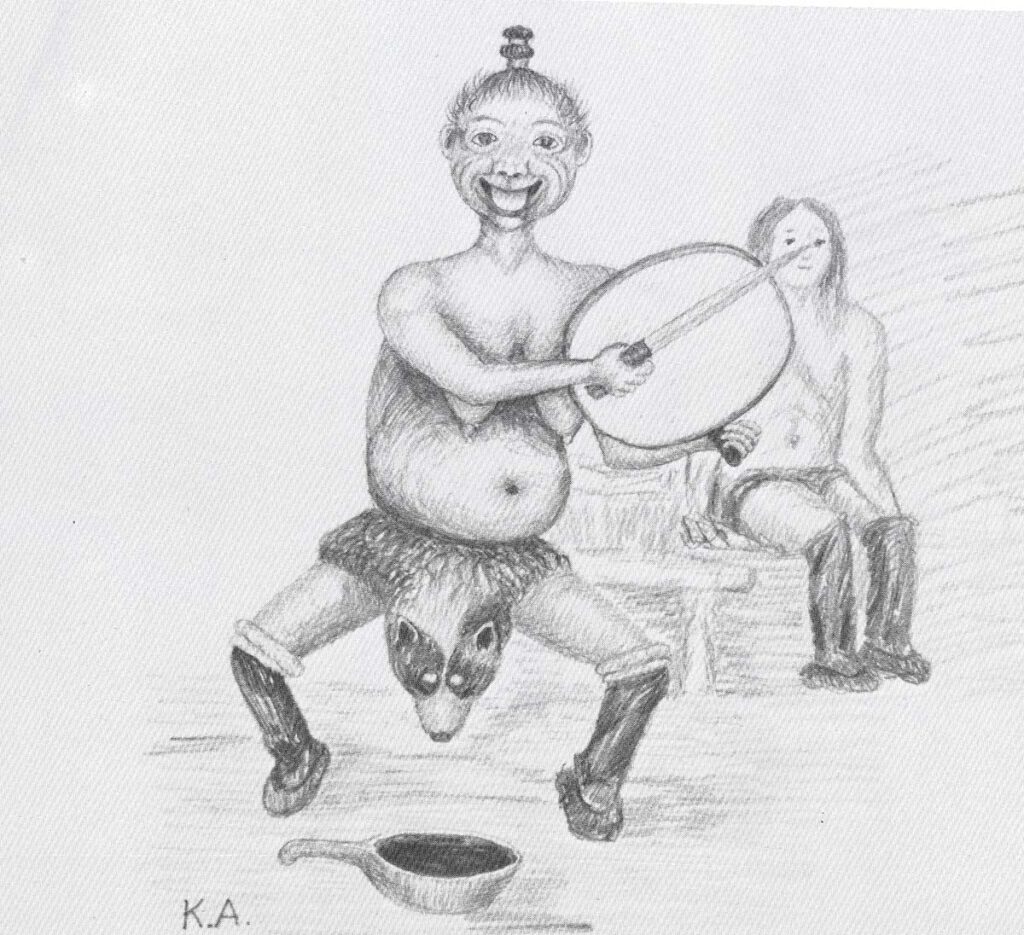
The Entrail Snatcher Drawing by Kârale Andreassen, today stored at the National Museum of Denmark. Nationalmuseet, Danmark, Photo: Jesper Kurt-Nielsen CC BY-SA 2.0 – The Entrail Snatcher or Lung eater, named Nalikkatteeq, was said to eat the lungs of the deceased humans, who passed by her on their way to the heavenly realm of death. With the […]
Traditional tupilak
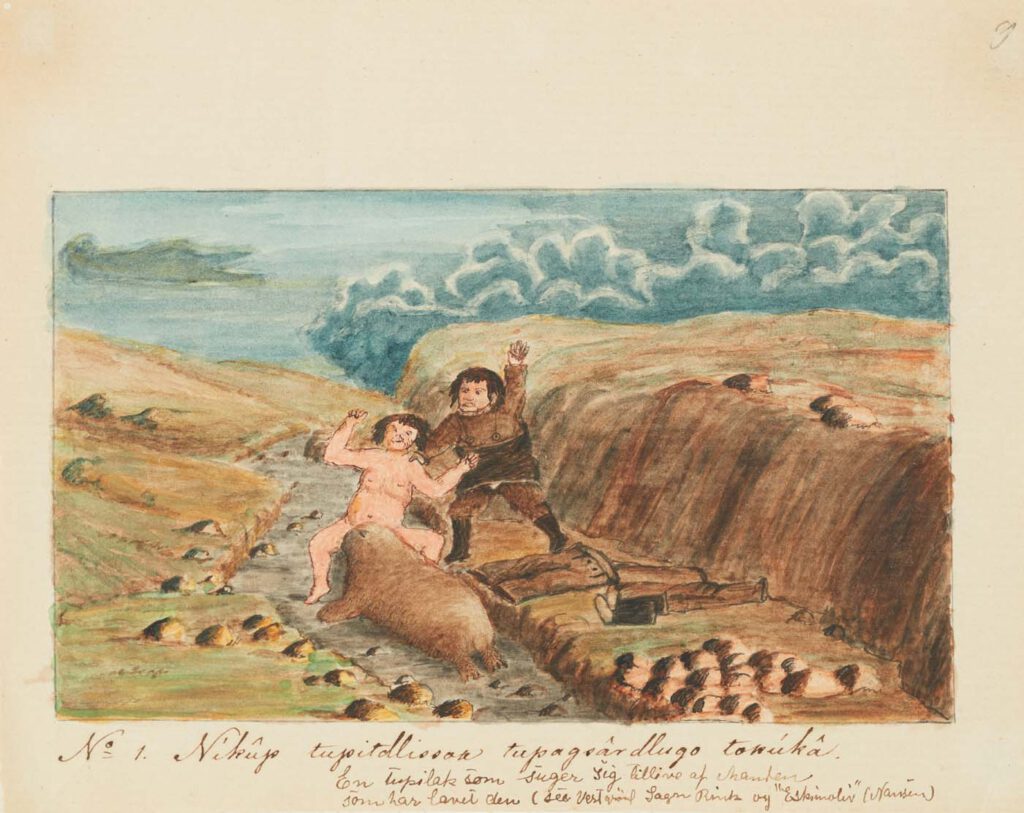
Traditional tupilak Water colour, Aron from Kangeq, Greenland, today stored in the Ethnographic Museum in Oslo (Oslo University).Photo: Alexis Pantos/©Museum of Cultural History, University of Oslo. – A tupilak was an artificially crafted object used for sorcery. It was meant to hurt the person to whom it was sent. It resembled a seal in size […]
Diseases of the Stomach (cancer)

Diseases of the Stomach (cancer) lithograph printed by Benard and Frey after Antoine Touissant de Chazal (French, 1793-1854). From Jean Cruveilhier, Anatomie pathologique du corps humain (Paris: J. B. Baillière, 1829-1842), vol. 2, part 27, pl. 1. Huntington Library, Art Museum and Gardens, San Marino, California, RB 632011. – By the nineteenth century, publishing technology […]
The Reward of Cruelty (The Four Stages of Cruelty)
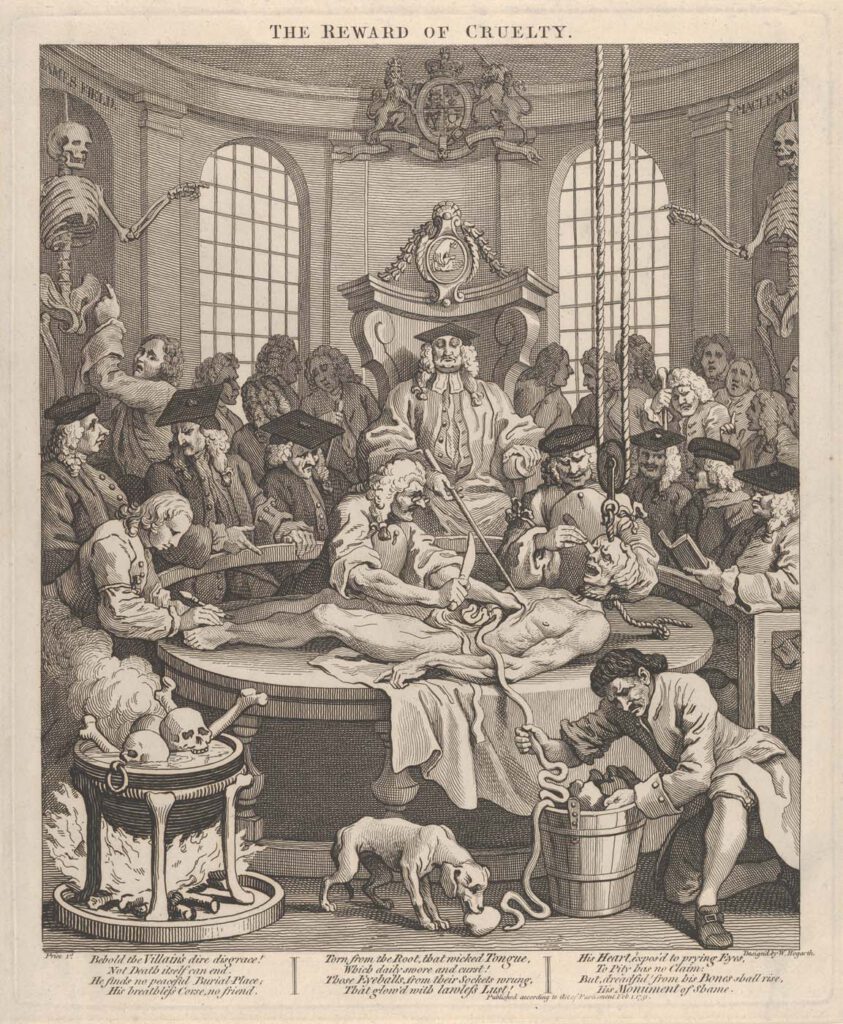
The Reward of Cruelty (The Four Stages of Cruelty), etching and engraving by William Hogarth (English, 1697–1764),February 1, 1751, plate: 15 1/4 x 12 5/8 in. (38.8 x 32 cm)sheet: 15 3/4 x 13 1/16 in. (40 x 33.2 cm) Metropolitan Museum, New York, Gift of Sarah Lazarus, 1891, no. 91.1.139. – This scene, incorporating […]
John Banister Delivering an Anatomical Lecture on the Viscera
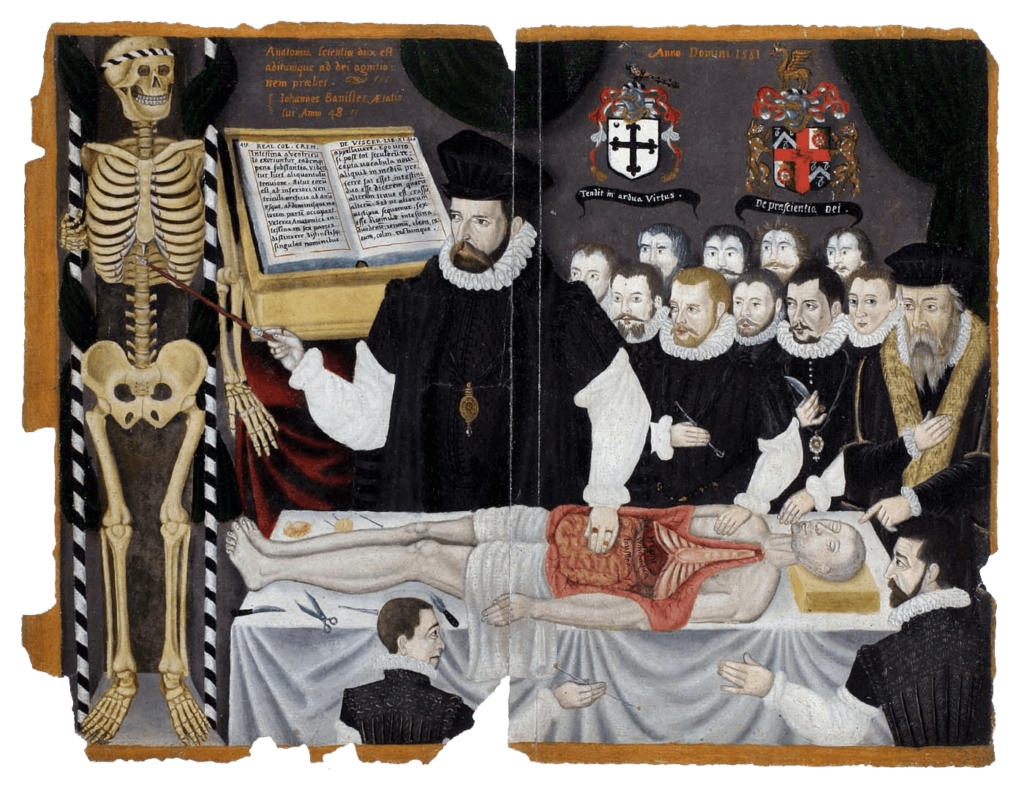
John Banister Delivering an Anatomical Lecture on the Viscera 1581, painting, 33.8 x 43.2 cm. University of Glasgow Library, Glasgow, GB 247 MS Hunter 364 (V.1.1), frontispieceUniversity of Glasgow Archives & Special Collections, MS Hunter 364. – The English surgeon and physician John Banister (1532/3–1599?) lectures on the viscera, placing his hand on the open abdomen […]
Abdominal Dissection
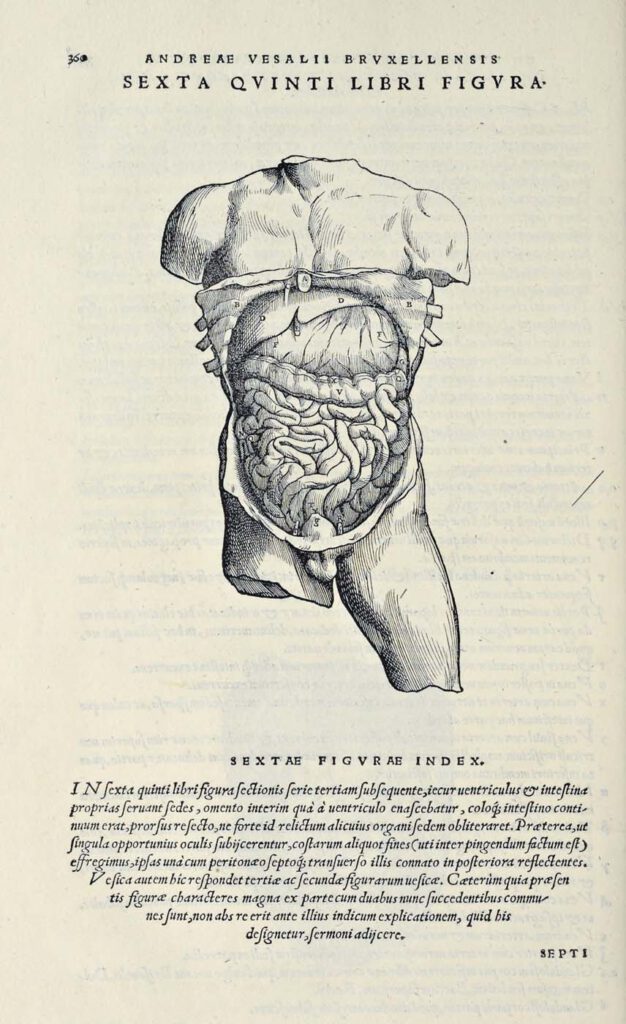
Abdominal Dissection woodcut after Jan Steven van Calcar (North Netherlandish, ca. 1515– ca. 1546). From Andreas Vesalius, De humani corporis fabrica libri septem (Basel: J. Oporinus, 1543), bk. 5, p. 360 [460], fig. 6. Getty Research Institute, Los Angeles, 84-B27611 – Ribs have been broken and the skin peeled back to display the liver, stomach, […]
The Martyrdom of St Erasmus

The Martyrdom of St Erasmus about 1430–1440, by Master of Sir John Fastolf (French, active before about 1420 – about 1450). Tempera colors, gold leaf, and ink, Leaf: 12.1 × 9.2 cm (4 3/4 × 3 5/8 in.) The J. Paul Getty Museum, Los Angeles, Ms. 5 (84.ML.723), fol. 38v – This scene of the martyrdom […]
Roman marble version of a dying Gaul
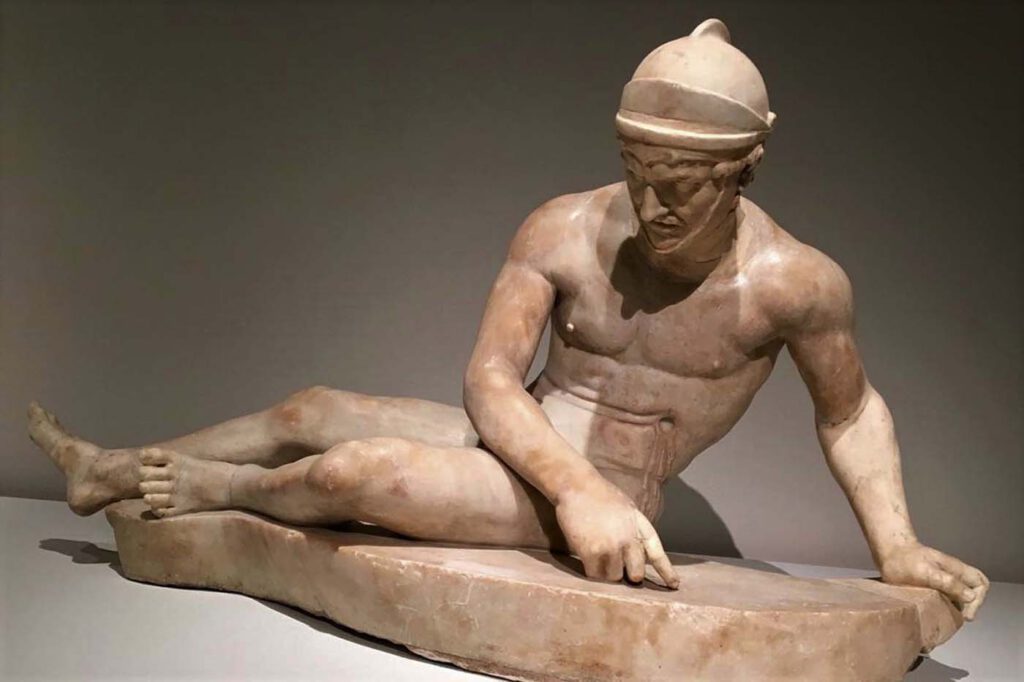
Roman marble version of a dying Gaul the original was part of a major sculptural display on the Athenian Acropolis of Attalid Greeks fighting Gauls in Asia Minor, Gods fighting Giants, Greeks fighting Amazons, and Greeks fighting Persians in the Persian Wars, c.200 B.C. Naples Dying GaulPhoto: Mary Harrsch, CC-BY-NC-SA-2.0 – In c. 200 BCE Attalos […]
Marble votive relief

Marble votive relief showing votive body-parts c.480 B.C., fourth-century B.C. from Asklepieion at Athens Notwendige Votive Relief – Acr. 7232 © Acropolis MuseumPhoto: Constantinos Vasiliadis – A number of Greek sanctuaries, and in particular sanctuaries of healing god Asklepios, have yielded dedications of votive body-parts. These include arms and hands, legs and feet, eyes, ears, […]
Blasengeschwülste, Fig. 44-46: Ansichten eines Papilloms, Fig. 47-48: Ansichten eines Tumors (Kneise 1908: Tafel IX)

Blasengeschwülste, Fig. 44-46: Ansichten eines Papilloms, Fig. 47-48: Ansichten eines Tumors (Kneise 1908: Tafel IX) Kneise, Otto (1908): Handatlas der Cystskopie. Gebauer-Schwetschke: Halle a. Saale. — Attempts to access the interior of the body via orifices had already been made since antiquity, with particular attention being paid to the oral, genital, urinary and excretory organs. […]
